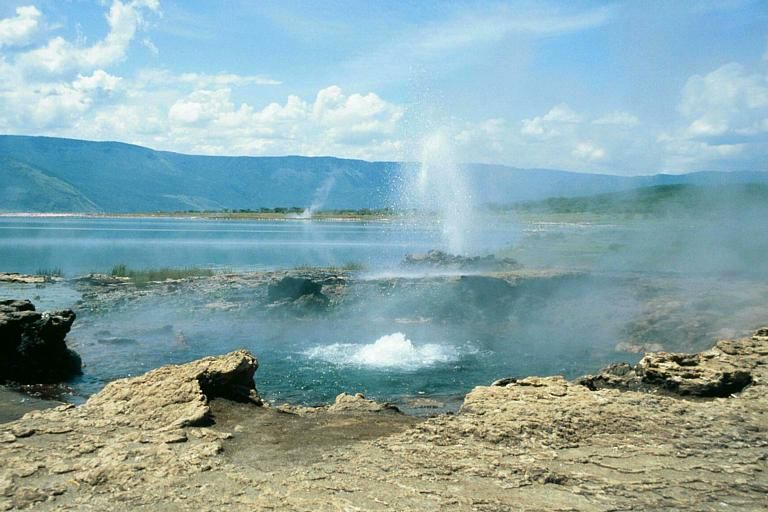
Lake Bogoria is said to be the best location to watch geysers and hot springs in Africa. The springs normally have high concentration of CO2 which explains the wild boiling in the shallow streams and gulley formed.
As rare as they are {geysers},are formed due to particular hydro geological conditions that exists In few places of the earth generally all geysers field areas are located near volcanic areas their effect are due to proximity of magma {molten rock}. Generally surface water works its way down to an average depth or around 200m where it gets to contact with hot rocks the result boiling of pressurized water results in to geysers effect of hot water and steam spraying out of the geysers surface vent.
The heat that leads to geysers formation comes from magma that needs to be near the surface of the earth the pressure encountered out in these areas where water is heated make the boiling point of water much higher than the normal atmospheric pressure.
Geysers are normally aligned along fault constrictions in the system and are normally essential to the building up of pressure before eruption
A key requirement that enables geysers to erupt is a material called geyserites found in rocks nearby geysers normally silicon dioxide SiO2 is dissolved from rocks and gets deposited to the walls of the geyser plumbing system which makes the channels carrying the water pressure tight, this allows the pressure to be carried all the way to the top and not to be leaked in to the loosed gravel soil that are normally under the geyser fields.
Along with their beauty they are also fragile phenomenon and can change, get dormant or extinct by people throwing debris inside or dewatering.
Without output, the level of Lake Bogoria is regulated by the heat and rain. Its warm and alkaline waters form a favorable environment for various microorganisms, including the cyanobacterium Arthrospira fusiformis {blue green algae} which serve as food for lesser flamingos and others.